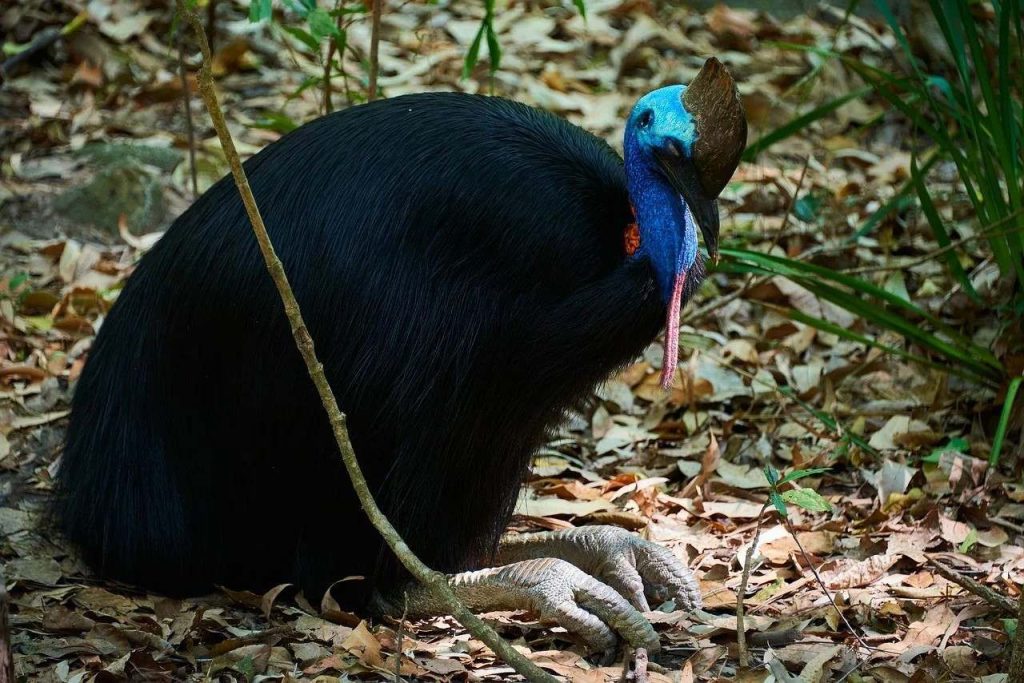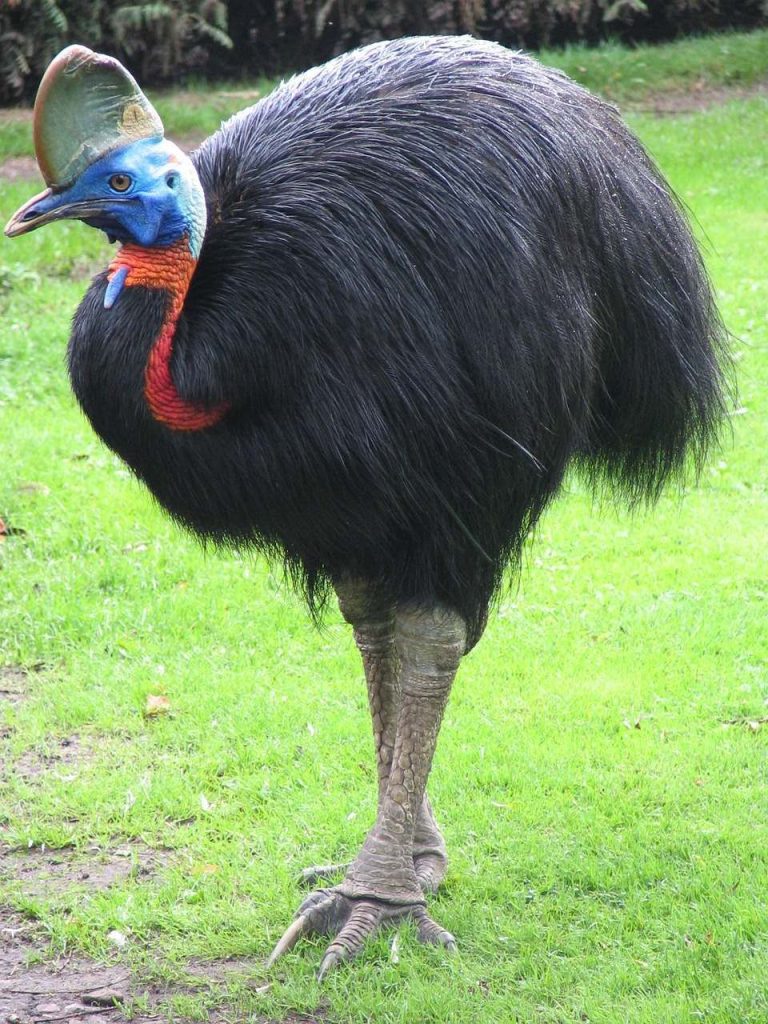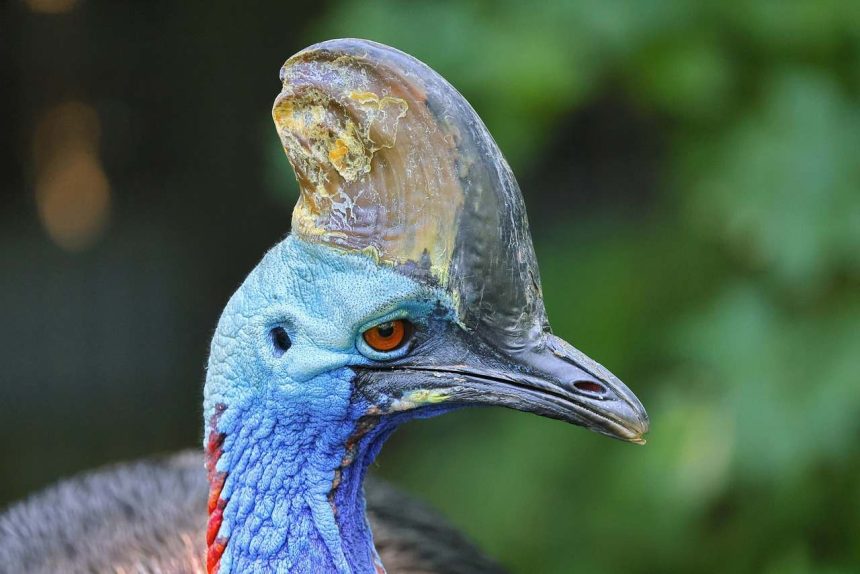The Cassowary, a large, flightless bird found in the rainforests of New Guinea and northern Australia, is often labeled as the world’s most dangerous bird. With its powerful legs and sharp, knife-like claws, the Cassowary poses a significant threat not only to other animals but also to humans. This article explores the Cassowary’s physical characteristics, behavior, diet, habitat, and conservation status, shedding light on why this bird is both fascinating and formidable.
Physical Characteristics and Behavior
The Cassowary stands impressively at up to 1.8 meters tall and can weigh over 80 kilograms, making it a formidable presence in its natural habitat. One of its most striking features is its vibrant blue head, crowned with a bony casque that serves to protect its skull. Unlike the deep, dark feathers that adorn its body, the chicks are born with a distinctive brown coloration, providing them with camouflage in the forest floor.

Despite its massive size, the Cassowary is remarkably agile, capable of running at speeds up to 48 kilometers per hour. This agility allows it to navigate the dense rainforests with ease and even swim across bodies of water. However, this ability can transform the bird into a dangerous opponent when it feels threatened.
When provoked, the Cassowary can launch a swift and aggressive attack. Its primary weapon is its powerful kicks, which can deliver devastating blows with its sharp claws. Incidents of serious injuries and fatalities caused by Cassowary attacks have been documented, underscoring the need for caution when encountering this bird.
Diet and Habitat
Cassowaries are omnivorous, with a diverse diet that includes fruits, seeds, insects, and small animals. They thrive in environments near water, where they can swim and hunt for fish. Typically found in pairs or family groups, Cassowaries are known for their strong territorial instincts, marking and defending their territory against intruders.
Evolution and Conservation
The evolution of the Cassowary is a fascinating journey. Scientists believe that its ancestors were once capable of flight. However, over time, they have adapted to a terrestrial lifestyle, losing their flying abilities. This evolution has equipped the Cassowary with unique adaptations suited to life on the ground.

Despite their dangerous reputation, Cassowaries play a crucial role in their ecosystems. They are considered keystone species, contributing to seed dispersal and forest regeneration. Conservation efforts are vital for protecting their habitats and raising awareness about the threats they face, such as deforestation and human encroachment.
The Cassowary is a captivating yet potentially deadly creature. Its unique adaptations and powerful defenses have earned it the title of one of the most dangerous birds in the world. Understanding the behavior, habitat, and conservation needs of this enigmatic bird is essential for ensuring its survival and protecting human safety within its native range. By fostering awareness and promoting conservation, we can help safeguard the future of this remarkable species.




